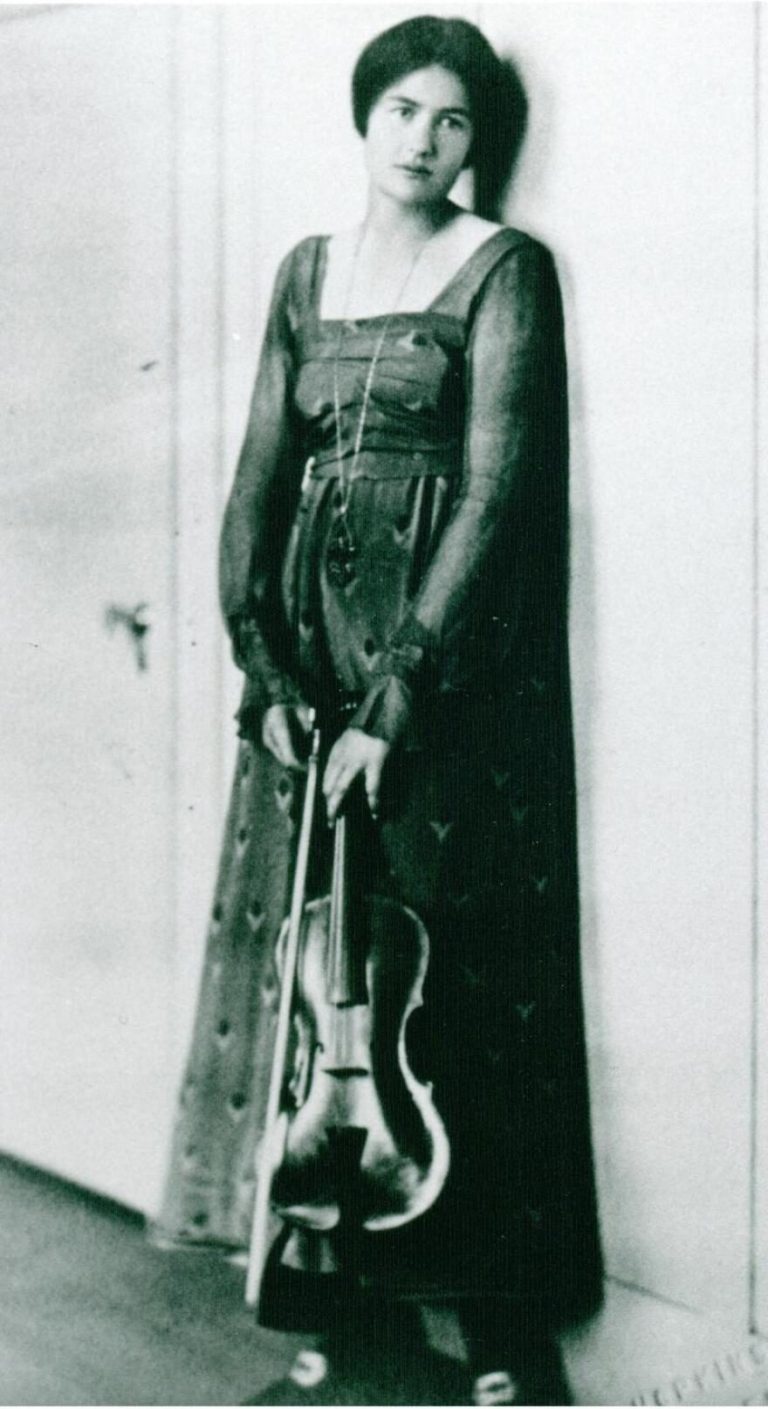Rebecca Clarke (1886-1979)
Composer; Violinist

Works published by MoV
Ave Maria (SAA)
Ave Maria (SAA)
Rebecca Clarke sets the so-called Italian Renaissance Ave Maria text, the original setting of which can be traced back to Josquin des Prez. It was her first composition for upper voices, composed in 1937, and first performed at the London Oratory shortly thereafter. The setting is through-composed, with each phrase of text unfolding in its own, unique harmonic progression, utilising a broad range of chromatic chords and unexpected changes of key. Silence is used to maintain tonal clarity between each section. The setting is predominantly homophonic with short sections of imitation to provide textural contrast, and one use of sequential repetition which initiates the final build to a climax on ‘videamus’ (we may see thee).
Translation: Hail Mary, full of grace; the Lord is with thee. Blessed art thou among women, and blessed is the fruit of thy womb, Jesus. Blessed Mary, Queen of heaven, gentle and merciful, O Mother of God. Pray for us sinners, so that with the saints we may see thee.
Ave Maria (SAA)
This work is published in our anthology Volume 2
To order the sheet music click on the buttons below.
Perusal score coming soon
(August 2025)
Rebecca Clarke (1886–1979)
Rebecca Clarke was born in Harrow (north-west of London) to an American father and a German mother. Amateur music-making was important to her parents, so she was started on violin, and participated in family string quartets. Because her father was an outspoken atheist, she abstained from religion classes in her school years, and did not practice any formal denomination, but the three choral works (this Ave Maria, her large setting of Psalm 91, and her setting of There is no rose of such virtue based on an English fifteenth century carol), and the voice and piano setting of Psalm 63, reveal a personal interest in religion. Like most of her music, these works were not published in her lifetime, and Ave Maria was the first of these pieces to be made available through publication (in 1998).
Clarke studied violin at the Royal Academy of Music in London, and then composition with Sir Charles Stanford at the Royal College of Music; she became his first female pupil to specialize in composition. Stanford suggested she switch to viola, and she supported herself as a violist for many years, as well as writing her best known work (the Sonata of 1919) for that instrument.
Clarke travelled extensively from 1916–1923, and participated (and composed for) three chamber music festivals sponsored by Elizabeth Sprague Coolidge. In 1924 she re-settled in London, and worked as a performer. By the 1930s Clarke was composing very little; the Ave Maria is one of the few works from that time, although its dating is tentative. Sources found in 2003 reveal that she wrote the work at the suggestion of her friend, pianist Kathleen Long, for possible performance at the London Oratory.
In 1939, Clarke was visiting her brothers in the U.S. when war broke out and she was stranded. She married pianist James Friskin (who taught at the Julliard School); they had been colleagues at the Royal College. She settled with him in New York City, where she lived until her death at age 93. (Dr Liane Curtis, President, The Rebecca Clarke Society, Inc)
©MoV 2020